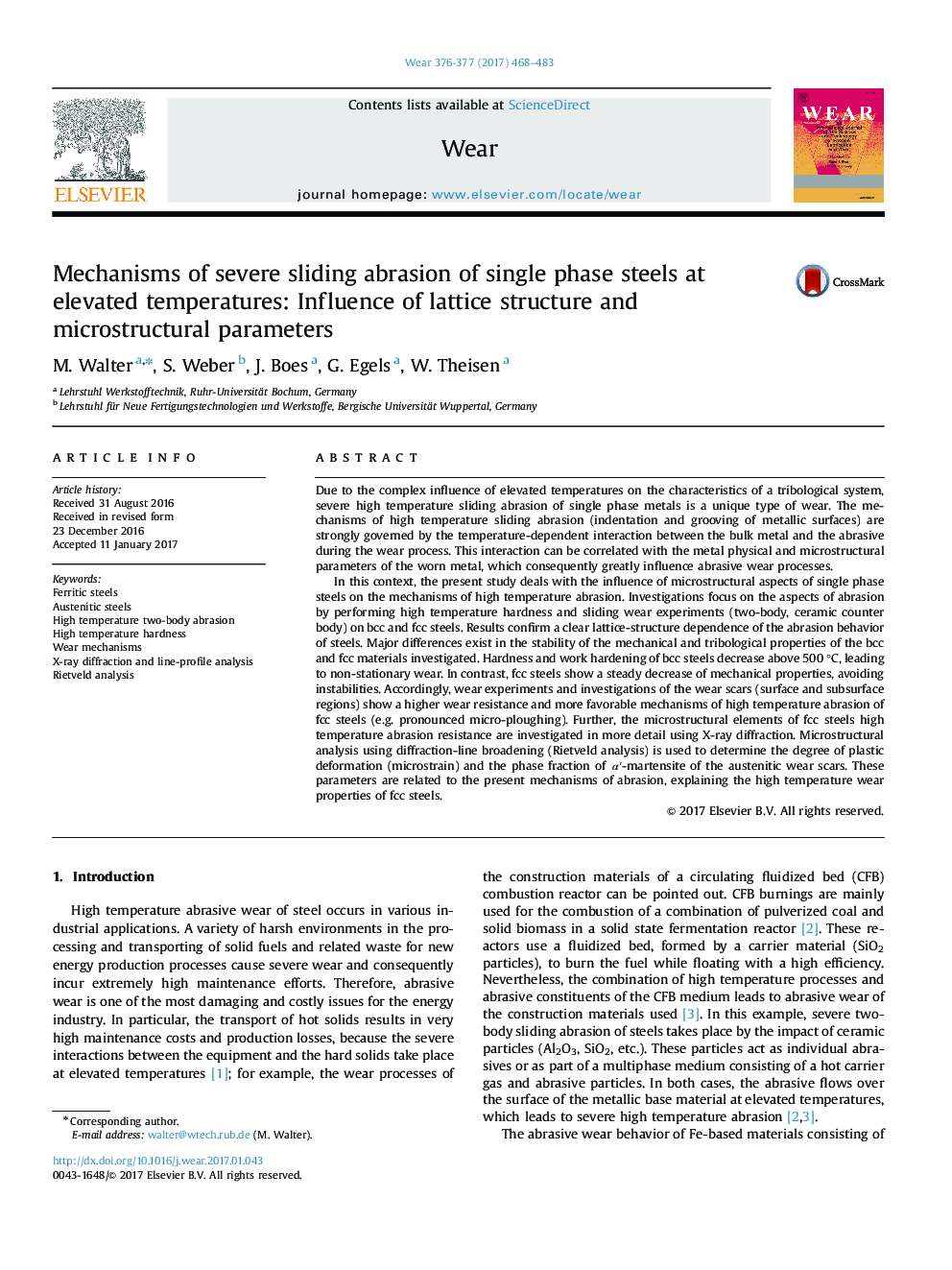| کد مقاله | کد نشریه | سال انتشار | مقاله انگلیسی | نسخه تمام متن |
|---|---|---|---|---|
| 4986716 | 1454953 | 2017 | 16 صفحه PDF | دانلود رایگان |
عنوان انگلیسی مقاله ISI
Mechanisms of severe sliding abrasion of single phase steels at elevated temperatures: Influence of lattice structure and microstructural parameters
ترجمه فارسی عنوان
مکانیزم سایش کششی شدید فولادهای تک فاز در دمای بالا: تأثیر ساختار شبکه و پارامترهای میکروساختار
دانلود مقاله + سفارش ترجمه
دانلود مقاله ISI انگلیسی
رایگان برای ایرانیان
کلمات کلیدی
موضوعات مرتبط
مهندسی و علوم پایه
مهندسی شیمی
شیمی کلوئیدی و سطحی
چکیده انگلیسی
In this context, the present study deals with the influence of microstructural aspects of single phase steels on the mechanisms of high temperature abrasion. Investigations focus on the aspects of abrasion by performing high temperature hardness and sliding wear experiments (two-body, ceramic counter body) on bcc and fcc steels. Results confirm a clear lattice-structure dependence of the abrasion behavior of steels. Major differences exist in the stability of the mechanical and tribological properties of the bcc and fcc materials investigated. Hardness and work hardening of bcc steels decrease above 500 °C, leading to non-stationary wear. In contrast, fcc steels show a steady decrease of mechanical properties, avoiding instabilities. Accordingly, wear experiments and investigations of the wear scars (surface and subsurface regions) show a higher wear resistance and more favorable mechanisms of high temperature abrasion of fcc steels (e.g. pronounced micro-ploughing). Further, the microstructural elements of fcc steels high temperature abrasion resistance are investigated in more detail using X-ray diffraction. Microstructural analysis using diffraction-line broadening (Rietveld analysis) is used to determine the degree of plastic deformation (microstrain) and the phase fraction of αâ²-martensite of the austenitic wear scars. These parameters are related to the present mechanisms of abrasion, explaining the high temperature wear properties of fcc steels.
ناشر
Database: Elsevier - ScienceDirect (ساینس دایرکت)
Journal: Wear - Volumes 376â377, Part A, 15 April 2017, Pages 468-483
Journal: Wear - Volumes 376â377, Part A, 15 April 2017, Pages 468-483
نویسندگان
M. Walter, S. Weber, J. Boes, G. Egels, W. Theisen,
